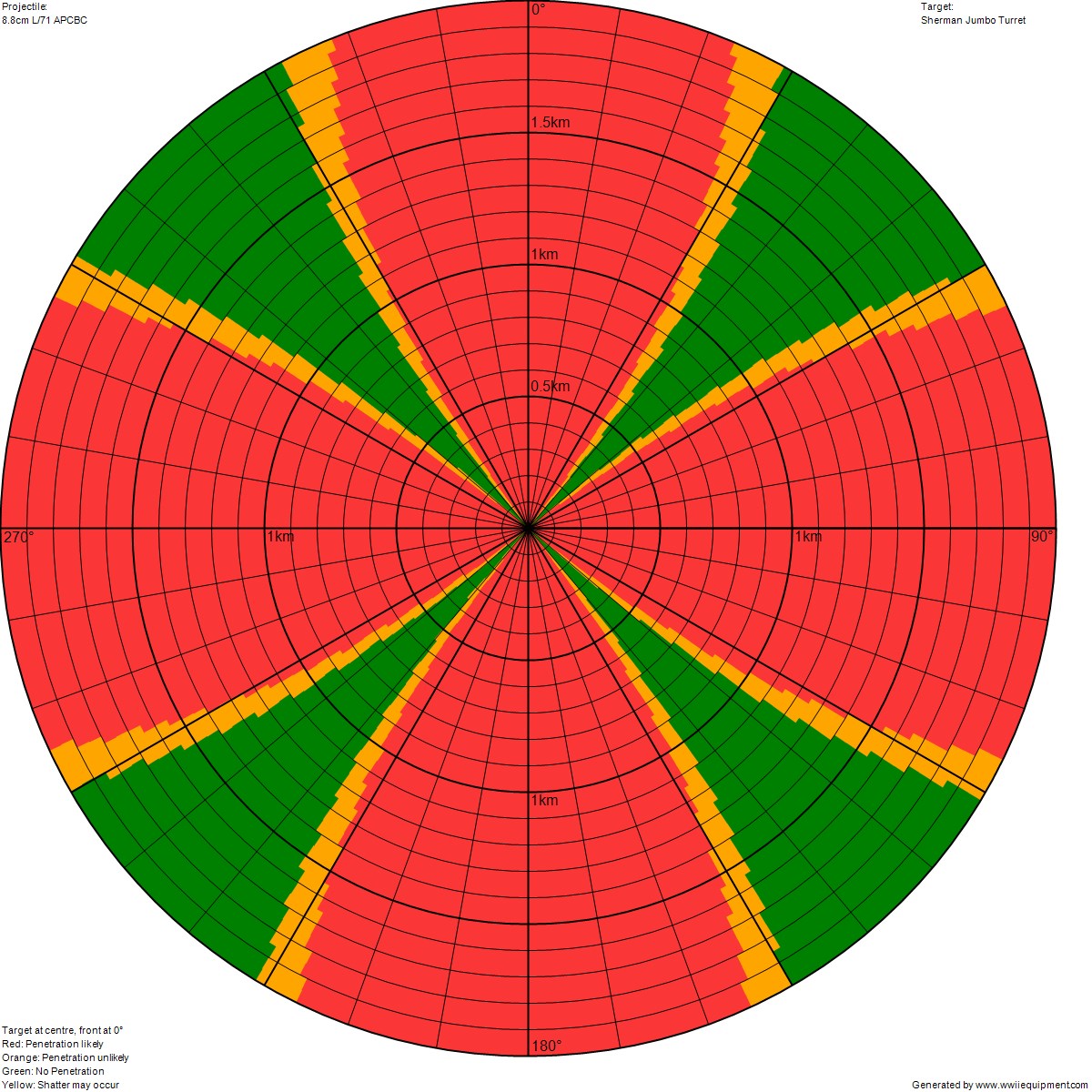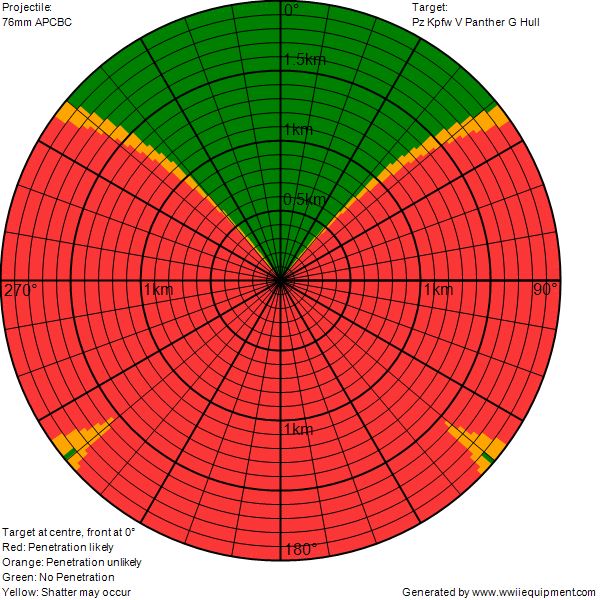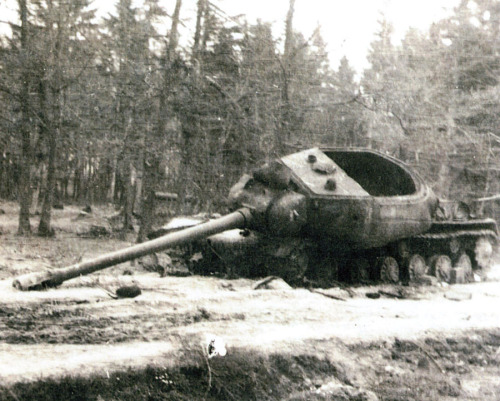

And another thing: These IS-2's were knocked out at a distance of over 1,500 meters in a head on engagement with Tiger Ausf.E's on the Eastern front in late August 1944 (Note the glacis is penetrated right above drivers visor).
Actually Soviet tanks hroughout the war faced the same problem Germans were facing late in the war. The steel wasn´t the finest quality and got brittle. Could explain what you are obviously seeing on this picture.
Great sources and logic.
I wanna see ugbear explain that!
It seems that UGBEARS way of thinking: "Oh i made a testing against 30° plate and then i use triangle function math to tell you what would be the Penetration for 90°." - is simply stupid.
UGBEAR will ignore that you can be sure.

@UGBEAR tell me about all mechanical and physical factors that affect such a testing?
What about the heat?
What about the material of the Shell and steelplate?
What is the mechanical resistance of different angles?
What impact Play the front form of a Shell in different angles?
How much does the thickness of the armour affect the mechanical resistance?
What factor Plays the material in the mechanical resistance?
What about mechanical weak Points in the armour?
If the material of the steelplate would be made of paper what would be the Penetration for a steel Shell?

What will be the result of this Shell forms on armour Penetration?How much will the armour Penetration Change if they hit the armour in a sloped or non sloped angle with different Shell form types?Which Shell will be the best, which the worst and what about mechanical factors?
Which Shell will have most mechanical resistance and which least and how much Change this if they hit the plate on different angles?
UGBEARS answer:"I make triangle math function and ignoring all this".
















 cblanco ★
cblanco ★  보드카 중대
보드카 중대  VonManteuffel
VonManteuffel  Heartless Jäger
Heartless Jäger 